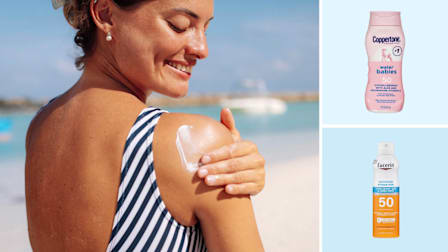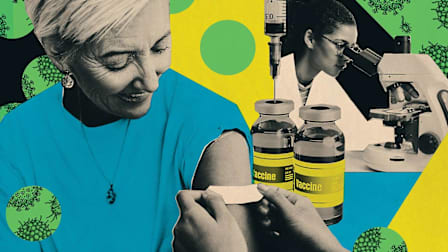For Black People, Surviving Skin Cancer Begins With Knowing What to Look For—and Where
Hint: It often shows up where the sun doesn’t shine. A guide to self-checking Black skin.
When you shop through retailer links on our site, we may earn affiliate commissions. 100% of the fees we collect are used to support our nonprofit mission. Learn more.

Maya Angelou has long been credited with saying, “Do the best you can until you know better. Then when you know better, do better.”
Nobody thinks she was referring to skin care, of course—but when it comes to dermatology, knowing better can save lives.
The abundance in Black skin of melanin, the pigment that gives skin its color, offers protection from damaging ultraviolet rays. That makes Black people less likely than white people to get melanoma, the most dangerous skin cancer.
But that fact comes with a tragic footnote: Black people who are diagnosed with melanoma are about five times as likely as white people to die within five years.
That dramatic difference is largely the result of late diagnoses, likely caused in large part by a lack of awareness about how melanoma typically presents on Black bodies.
If we know how and where to look for the disease, in other words, fewer of us will die of it.
The Other Form of Melanoma
Reggae pioneer Bob Marley’s death at the age of 36 is a cautionary tale of delayed detection. A dark spot under his toenail that Marley believed to be the result of a soccer injury was eventually diagnosed as acral lentiginous melanoma (ALM).
ALM is an aggressive cancer that usually appears as a freckle or dark brown spot or patch on the palms or the soles of the feet, or as a band running lengthwise under a nail—rather than on parts of the body that are more exposed to sunlight, where melanoma is usually found on lighter skin. Though it can occur in anyone, ALM is the most common type of malignant melanoma among populations with darker skin tones.

Awareness is the best defense against skin cancer for Black people. If you see anything growing or changing or bleeding on your skin, see a board-certified dermatologist.
Board-certified dermatologist and assistant professor in the department of internal medicine at Dell Medical School at the University of Texas at Austin
Efforts are underway to address the issue. On Instagram, for example, Brown Skin Matters encourages its 118,000 followers to submit photos in order to create an image bank of what various dermatological conditions look like on skin of color. Started by a mother who searched online for “eczema on infant” and noticed that none of the images she found looked like her biracial son’s symptoms, the account had amassed more than 200 posts with photos and descriptions as of late February. And in 2020, an international team of medical educators launched Skin Deep, a free, open-access medical education resource featuring photographs of dermatological conditions on a range of skin tones.
A lack of diversity among dermatologists may also play a role in delaying ALM diagnoses. One 2020 JAMA study shows improved patient experience when physicians shared a racial/ethnic background with their patients. Yet only 3 percent of dermatologists in the U.S. are Black, while Black people make up 13 percent of the population.
How to Check for ALM
Regardless of the reasons for delayed ALM diagnoses, there are simple ways anyone can decrease their own risk. Early detection is key. Here’s what to do:
Perform regular self-checks. The American Academy of Dermatology (AAD) recommends using a full-length mirror to check your entire body for spots, moles, discoloration, rough or dry patches, and sores that won’t heal or that heal and then return. A handheld mirror will let you examine hard-to-see areas like the top of the head, back, groin, buttocks, and behind the ears. (You can also enlist help from a loved one.) And ask your barber or hairdresser to tell you if they notice any new or odd-looking growths or spots on your scalp.
Check where the sun doesn’t shine. Keep in mind that skin cancer in darker skin populations most often develops on the soles of the feet, palms of the hands, and nail beds, says Andrew Alexis, MD, MPH, dermatologist at Weill Cornell Medicine.
In 2010, a panel of podiatrists and dermatologists developed a clinical guide to aid in early identification of melanomas on the feet and nails known as CUBED, which is detailed below.
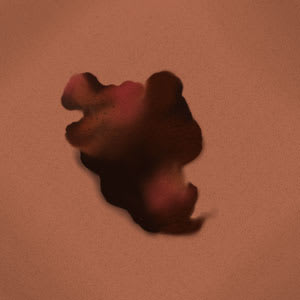
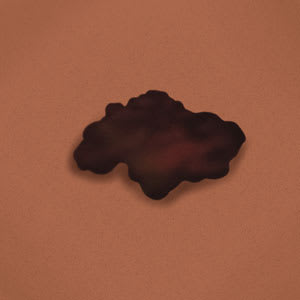

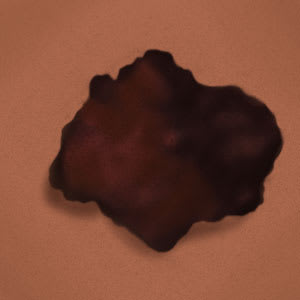
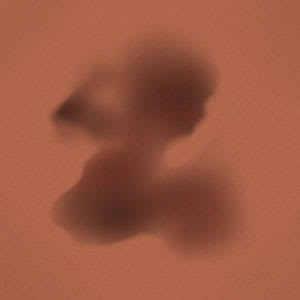
A few other things to keep in mind: Although it can occur on any toenail, ALM has a tendency to develop on the big toe, according to the AIM at Melanoma Foundation. Pay close attention to any narrow dark streaks in a nail not caused by an accident. On the surface of the foot an ALM lesion could be flat, even as the tumor grows deep into the skin. The Foundation also cautions that thickening ALM is sometimes mistaken for a plantar wart on the sole of the foot and can make walking painful.
Keeping a close watch on your own body parts is critical, but if you use a manicurist or pedicurist, they can also be helpful in spotting abnormalities on your hands and feet, and under the nails.
Find a dermatologist who understands dark skin. A 2023 study found 69.5 percent of participants in an online study of communities of color regarding the care of their skin and hair did not believe most dermatologists are trained to treat darker skin tones. But various institutions and individuals are working to change that. The Skin of Color Society is a member organization with a directory of physicians and board-certified dermatologists promoting awareness in skin-of-color dermatology. And there are a growing number of academic “ethnic skin centers” in the U.S., which focus on the care and research of conditions common among persons of color, preparing residents to treat skin of color, and educating the medical community and public. In 2020 researchers identified 15 formal skin of color centers in the U.S. working to expand access to culturally competent care for diverse patient populations.
Protect your skin from the sun. Recognizing that Black people tend to get melanoma on body parts that solar rays don’t typically reach is important, but dark-skinned people still must protect themselves from direct sunlight. Even the darkest skin has a natural sun protection factor (SPF) of only 13, according to the Dermatology Education Foundation—while the American Academy of Dermatology recommends correct consistent use of broad-spectrum, water-resistant sunscreen with an SPF of at least 30.
For some people of color, sunscreen is a hard sell. “The acceptance of sunscreen use by people with skin of color has been at least in part affected by challenges finding sunscreen formulations that do not leave a visible cast,” Alexis says. Sunscreen can manifest on darker complexions as a white overtone that makes skin look like a powdered doughnut—but some are better than others in this respect. In a CR evaluation, 83 people with olive to deep-brown complexions were asked to judge the look and feel of 21 sunscreens on their skin. The participants found several products that absorbed quickly and did not make their skin look chalky or ashy, including these:
Of course, limiting your skin’s exposure to the sun, by either staying in the shade or wearing protective clothing, can also mitigate the risk of developing skin cancer. Wide-brimmed hats can protect the face and neck and the vulnerable skin behind the ears. It’s also important to wear shoes that cover the entire foot because African Americans often develop skin cancer on their feet.

















